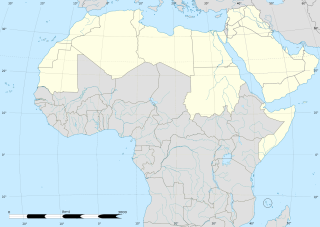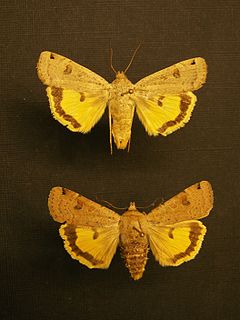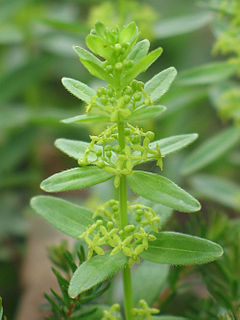| Lasiocampa | |
|---|---|
 | |
| Scientific classification | |
| Kingdom: | |
| Phylum: | |
| Class: | |
| Order: | |
| Family: | |
| Genus: | Lasiocampa Schrank, 1802 |
| Synonyms | |
| |
Lasiocampa is a genus of moths in the family Lasiocampidae. The genus was described by Franz von Paula Schrank in 1802. [2] [3]
| Lasiocampa | |
|---|---|
 | |
| Scientific classification | |
| Kingdom: | |
| Phylum: | |
| Class: | |
| Order: | |
| Family: | |
| Genus: | Lasiocampa Schrank, 1802 |
| Synonyms | |
| |
Lasiocampa is a genus of moths in the family Lasiocampidae. The genus was described by Franz von Paula Schrank in 1802. [2] [3]
Based on Lepidoptera and Some Other Life Forms:

The Arab world, also known as the Arab nation, the Arabsphere, or the Arab states, consists of the 22 Arabic-speaking countries which are members of the Arab League. A majority of these countries are located in Western Asia, North Africa, and the Horn of Africa; the southernmost member, the Comoros, is an island country off the coast of East Africa. The region stretches from the Atlantic Ocean in the west to the Arabian Sea in the east, and from the Mediterranean Sea in the north to the Indian Ocean in the southeast. Arabic is used as the lingua franca throughout the Arab world.

The white-tailed lapwing or white-tailed plover is a wader in the lapwing genus. The genus name Vanellus is Medieval Latin for a lapwing and derives from vannus a winnowing fan. The specific leucurus is from Ancient Greek leukouros, "white-tailed".

The greater short-toed lark is a small passerine bird. The current scientific name is from Ancient Greek. The genus name, Calandrella, is a diminutive of kalandros, the calandra lark, and brachydactila is from brakhus, "short", and daktulos, "toe".

The lesser short-toed lark is a small passerine bird found in the southern Palearctic ncluding North Africa. It is a common bird with a very wide range and the International Union for Conservation of Nature has rated its conservation status as being of "least concern". Confusingly, Hume's short-toed lark is also sometimes called the lesser short-toed lark.

Lamium (dead-nettles) is a genus of about 40–50 species of flowering plants in the family Lamiaceae, of which it is the type genus. They are all herbaceous plants native to Europe, Asia, and northern Africa, but several have become very successful weeds of crop fields and are now widely naturalised across much of the temperate world.

Alopecurus, or foxtail grass, is a common and widespread genus of plants in the grass family. It is common across temperate and subtropical parts of Eurasia, northern Africa, and the Americas, as well as naturalized in Australia and on various islands.

Tomares is a genus of lycaenid butterflies. They are presently the only genus in the tribe Tomarini. As not all Theclinae have been assigned to tribes, this is preliminary however. The species are found in the Palearctic.

Catocala fulminea, the yellow bands underwing, is a moth of the family Erebidae. The species was first described by Giovanni Antonio Scopoli in his 1763 Entomologia Carniolica. It is found in central and southern Europe, east Asia and Siberia. The xarippe lineage has been proposed to be a distinct and valid species in its own right, instead of being only subspecifically distinct.

Cupido is a genus of butterflies in the family Lycaenidae. The subgenus Everes is included here. The genus is confined to the Palearctic.

Noctua orbona, the lunar yellow underwing, is a moth of the family Noctuoidea. It is found in the Palearctic.
Microloxia is a genus of moths family in the family Geometridae described by Warren in 1893.

Watsonarctia is a monotypic moth genus in the subfamily Arctiinae erected by Josef J. de Freina and Thomas Joseph Witt in 1984. Its only species, Watsonarctia deserta, the chaste pellicle, was first described by Max Bartel in 1902. It is found in central and south-eastern Europe, southern Russia, southern Siberia east to Lake Baikal; also in Asia Minor, Armenia, Azerbaijan, northern Iran, Kazakhstan, Kyrghyzstan and Xinjiang in China.
Zekelita is a genus of moths of the family Erebidae. The genus was erected by Francis Walker in 1863.
Parocneria is a genus of tussock moths in the family Erebidae. The genus was erected by Harrison Gray Dyar Jr. in 1897.
Pachypasa is a genus of moths in the family Lasiocampidae. The genus was erected by Francis Walker in 1855.

Scopula ternata, the smoky wave, is a moth of the family Geometridae. It was described by Franz von Paula Schrank in 1802. It is mainly found in northern and parts of central Europe and in isolated populations in southern and south-eastern Europe. Its western range is eastern France, eastern Belgium and Scotland, with an isolated population in the Pyrenees. In the north its range extends to the polar regions and in the south it is found up to the Alps. Its eastern range extends through central and northern Russia up to the Ural, through Siberia up to the Yenisei River.

Drepana is a genus of moths belonging to the subfamily Drepaninae. The genus was erected by Franz von Paula Schrank in 1802.
Talis quercella is a species of moth in the family Crambidae. The species was first described by Michael Denis and Ignaz Schiffermüller in 1775. It is found in Italy, Austria, the Czech Republic, Slovakia, Poland, Hungary, Romania, Bulgaria, Croatia, Ukraine, Russia, Asia Minor, Iraq, Iran, China, Mongolia and North Africa.
Ancylolomia palpella is a species of moth in the family Crambidae described by Michael Denis and Ignaz Schiffermüller in 1775. It is found in Belgium, France, Spain, Portugal, Italy, Austria, the Czech Republic, Slovakia, Poland, Hungary, Croatia, Romania, Bulgaria, the Republic of Macedonia, Albania, Greece, Ukraine, Russia, Transcaucasia, Asia Minor, Lebanon, the Palestinian territories, Iraq, Syria, Iran and Central Asia.

Cruciata is a genus of flowering plants in the family Rubiaceae. It is found in Europe, northern Africa, and across southern and central Asia from Turkey to the western Himalaya and north to the Altay region of Siberia.
| This article on a moth of the family Lasiocampidae is a stub. You can help Wikipedia by expanding it. |